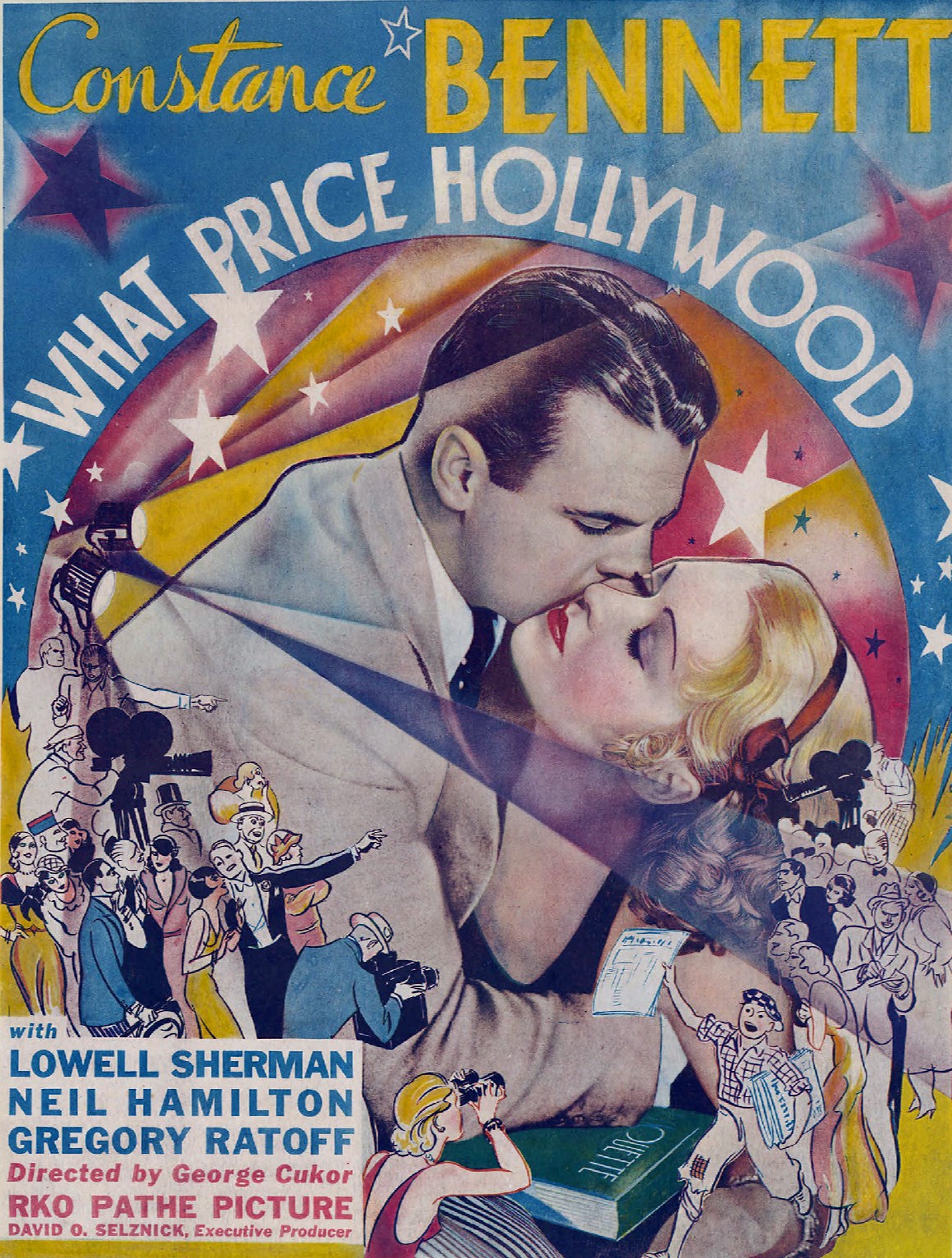Bradley Cooper is reportedly directing a remake of A Star Is Born in which he and Lady Gaga will take the roles played by Fredric March and Janet Gaynor in 1937, James Mason and Judy Garland in 1954, and Kris Kristofferson and Barbra Streisand in 1976. So maybe it's a good time to check out the ur-Star Is Born, What Price Hollywood?, that was produced by David O. Selznick and directed by George Cukor in 1932. The name is different but the plot's the same: A successful man in the entertainment business discovers a young woman whom he helps become a star, but as her career ascends, his personal problems send him into a tailspin.* The idea for the film is a natural in a Hollywood that had become increasingly conscious of its own myth, and many real-life analogs have been found in the history of the industry. Selznick commissioned Adela Rogers St. Johns, a former reporter for Photoplay and the Hearst newspapers, to write the story for the film, and various other hands turned it into a screenplay, though St. Johns and Jane Murfin claimed most of the credit when they were nominated for an Oscar for best original story. The film begins with a touch of screwball comedy when Max Carey (Lowell Sherman), an alcoholic director, encounters Mary Evans (Constance Bennett), a waitress at the Brown Derby looking for her chance to break into the movies. After some funny scenes involving Max's drunkenness and Mary's initial ineptness as an actress, the movie unfortunately begins to get serious. Though it's clear Mary really loves Max, when she becomes a big star she marries a society polo player, Lonny Borden (Neil Hamilton), after a somewhat cutesy courtship. But Borden is unhappy being "Mr. Mary Evans," and eventually storms out, though she's pregnant. Meanwhile, Max's decline continues, and after Mary rescues him from the drunk tank and promises to rehabilitate him, he shoots himself, thereby embroiling her in a headline-making scandal. But then Borden returns to apologize and all is well again. What keeps the film alive despite its clichés are the performances. Bennett is quite charming, and Sherman clearly models Max on John Barrymore, whom he knew well: He was married to Helene Costello, whose sister, Dolores, was Barrymore's third wife. The supporting cast includes Gregory Ratoff as the producer of Mary's films, Louise Beavers as (of course) her maid, and Eddie Anderson as Max's chauffeur -- five years before he became famous as Jack Benny's chauffeur, Rochester, on radio.
*As if there were any doubt, there's a clear link between What Price Hollywood? and at least the first A Star Is Born in that both were produced by Selznick. RKO, which released What Price Hollywood?, threatened to sue Selznick over the similarities, but decided against it. Selznick also asked Cukor to direct the 1937 film, but Cukor declined, so William A. Wellman took it on. But then Cukor went on to direct the 1954 Star Is Born. I don't think there's any direct connection between What Price Hollywood? and the 1976 version, produced by Streisand and Jon Peters and directed by Frank Pierson, but the lineage by then was obvious.
A blog formerly known as Bookishness / By Charles Matthews
"Dazzled by so many and such marvelous inventions, the people of Macondo ... became indignant over the living images that the prosperous merchant Bruno Crespi projected in the theater with the lion-head ticket windows, for a character who had died and was buried in one film and for whose misfortune tears had been shed would reappear alive and transformed into an Arab in the next one. The audience, who had paid two cents apiece to share the difficulties of the actors, would not tolerate that outlandish fraud and they broke up the seats. The mayor, at the urging of Bruno Crespi, explained in a proclamation that the cinema was a machine of illusions that did not merit the emotional outbursts of the audience. With that discouraging explanation many ... decided not to return to the movies, considering that they already had too many troubles of their own to weep over the acted-out misfortunes of imaginary beings."--Gabriel García Márquez, One Hundred Years of Solitude
Wednesday, April 19, 2017
What Price Hollywood? (George Cukor, 1932)
Links:
Adela Rogers St. Johns,
Constance Bennett,
David O. Selznick,
Eddie Anderson,
George Cukor,
Gregory Ratoff,
Jane Murfin,
Louise Beavers,
Lowell Sherman,
Neil Hamilton,
What Price Hollywood?
Subscribe to:
Posts (Atom)
